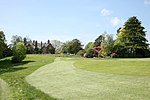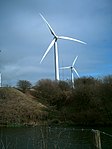Kirkby-in-Furness railway station

Kirkby-in-Furness is a railway station on the Cumbrian Coast Line, which runs between Carlisle and Barrow-in-Furness. The station, situated 9+1⁄4 miles (15 km) north of Barrow-in-Furness, serves the village of Kirkby-in-Furness in Cumbria. It is owned by Network Rail and managed by Northern Trains. The name Kirkby-in-Furness did not exist until the creation of the railway line. The village in fact is an amalgamation of six smaller villages and hamlets. The name was chosen almost at random by the train company for the station and was eventually used for the collection of villages. In Victorian times, the station gained fame as the station with the longest platform seat in the country. However, this was removed many years ago.
Excerpt from the Wikipedia article Kirkby-in-Furness railway station (License: CC BY-SA 3.0, Authors, Images).Kirkby-in-Furness railway station
Marsh Side,
Geographical coordinates (GPS) Address External links Nearby Places Show on map
Geographical coordinates (GPS)
| Latitude | Longitude |
|---|---|
| N 54.2329033 ° | E -3.1872166 ° |
Address
Kirkby-in-Furness
Marsh Side
LA17 7TA , Kirkby Ireleth
England, United Kingdom
Open on Google Maps










